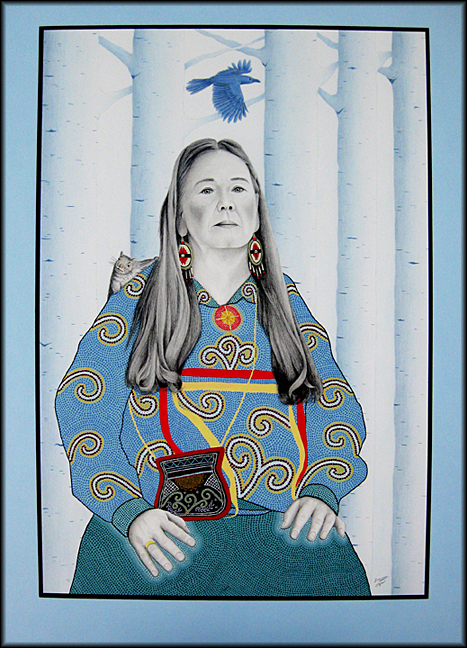Rhonda is a consummate artist who is producing some of the finest beaded bags made by a Native artist today. Gerry got to know her when she attended one of his presentations on northeast woodland beadwork in 2009. “She impressed me as a Native artist of great skill and creativity and as someone who has diligently researched her craft,” says Gerry. “Her work is a tribute to her ancestors and she is maintaining a traditional Wabanaki art form.”
“I have been doing beadwork for about thirteen years,” says Rhonda. “I was initially encouraged to try beadwork by a Mi’kmaq woman who showed me the classic stitches I still use today. Over the years, other Native women and men have shared beadwork tips and pointers, but the majority of what I have learned has been by trial and error. I believe that my ability to do beadwork is a direct result of my genes and my connection to bead working ancestors. When I sit down to bead, I invite my grandmothers to join me; those who crossed over long ago. Just as my ancestors were inspired, many of my colors and designs come from dreams and reflection.”
“I am of both Eastern and Western Abenaki descent. My ancestors lived in southern Quebec, northern New Hampshire, and along the Connecticut River valley for hundreds of years. By doing beadwork in a similar style as my ancestors, I honor those that came before me, and leave something for future generations. Through these tiny beads, the story of our survival as a people can be shared and my relatives can recognize a piece of who they are. My hope is that one of them will be inspired to learn more about their culture and take up a needle and thread to tell their own story of survival. By sharing the story of these tiny beads, it may be known that the indigenous people of New Hampshire are still here.”
Examples of Rhonda’s beadwork can be seen on her website.
